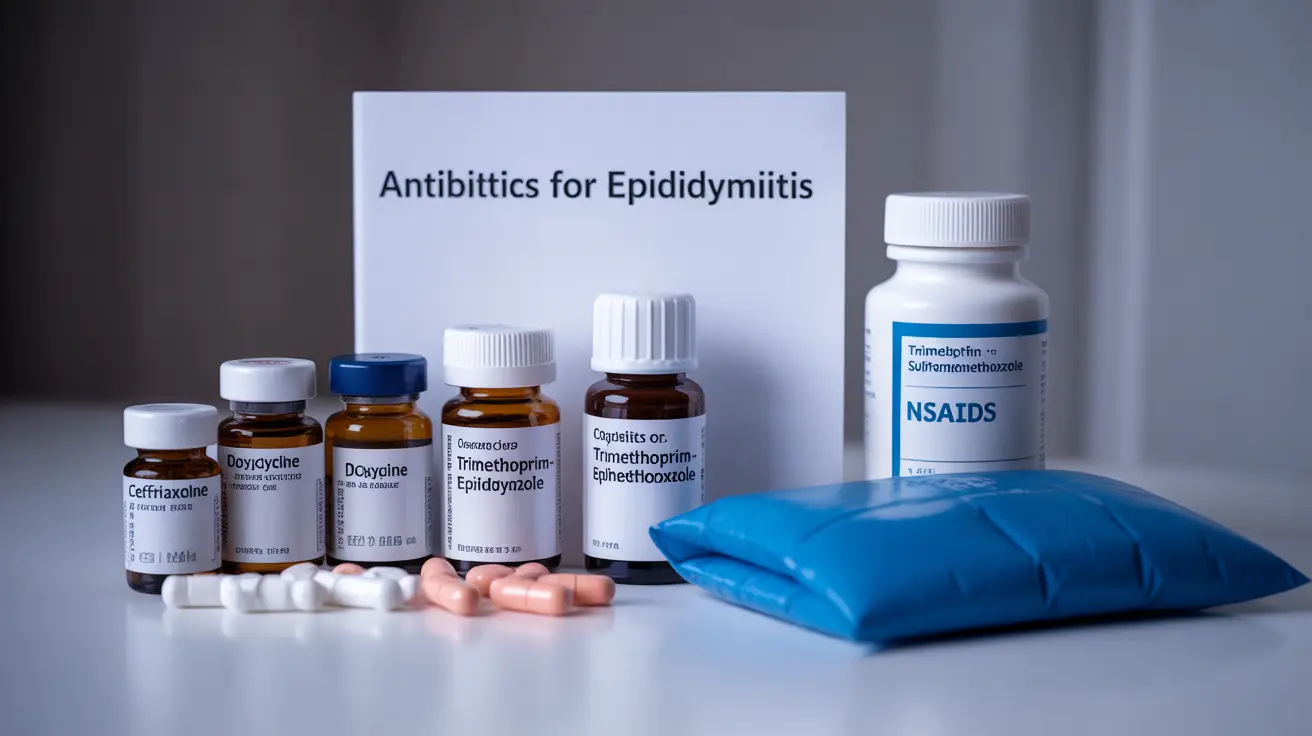When diagnosed with epididymitis, proper medication and treatment are essential for recovery and preventing complications. This inflammatory condition affecting the epididymis requires a targeted approach with antibiotics and supportive care to effectively manage symptoms and address the underlying cause.
Understanding the various treatment options and knowing what to expect during the recovery process can help ensure the best possible outcome. Let's explore the different medications used for epididymitis and how to maximize their effectiveness.
Types of Antibiotics Used for Epididymitis
The choice of antibiotics for epididymitis depends largely on the patient's age, sexual history, and the likely cause of the infection. Healthcare providers typically prescribe one of the following approaches:
For Sexually Active Adults
- Ceftriaxone plus doxycycline
- Azithromycin
- Fluoroquinolones in specific cases
For Children and Older Adults
- Trimethoprim-sulfamethoxazole
- Amoxicillin/clavulanate
- Fluoroquinolones (when appropriate)
Duration of Treatment
Most epididymitis treatments require a comprehensive antibiotic course lasting between 10 to 14 days. It's crucial to complete the entire prescribed course, even if symptoms improve earlier, to prevent the infection from recurring or becoming resistant to treatment.
Supportive Treatments and Pain Management
Alongside antibiotic therapy, several supportive treatments can help manage discomfort and speed recovery:
- Non-steroidal anti-inflammatory drugs (NSAIDs)
- Regular ice pack application
- Scrotal support or athletic supporter
- Rest and elevation when possible
- Adequate hydration
Monitoring Treatment Progress
During treatment, it's important to track symptom improvement and watch for any signs that might indicate a need for additional medical attention. Most patients begin to experience relief within 48-72 hours of starting appropriate medication.
When to Seek Additional Medical Care
If symptoms persist or worsen despite following the prescribed treatment plan, immediate medical attention may be necessary. This could indicate a need to adjust the medication or investigate other potential underlying conditions.
Frequently Asked Questions
What are the recommended antibiotics for treating epididymitis based on age and sexual history?
The choice typically includes ceftriaxone plus doxycycline for sexually active adults, while older adults and children may receive trimethoprim-sulfamethoxazole or amoxicillin/clavulanate. The specific choice depends on individual risk factors and likely causes.
How long does it usually take for epididymitis symptoms to improve after starting medication?
Most patients experience noticeable improvement within 48-72 hours of starting appropriate antibiotics. However, complete resolution may take up to two weeks with proper treatment.
What supportive treatments can help relieve pain and swelling alongside epididymitis medication?
Supportive treatments include taking NSAIDs for pain relief, applying ice packs, wearing scrotal support, getting adequate rest, and keeping the affected area elevated when possible.
Can epididymitis caused by sexually transmitted infections be treated with a single dose of antibiotics?
No, even when caused by STIs, epididymitis typically requires a full course of antibiotics lasting 10-14 days to ensure complete resolution and prevent recurrence.
What should I do if epididymitis symptoms do not improve within a few days of starting antibiotic treatment?
If symptoms persist or worsen after 72 hours of antibiotic treatment, contact your healthcare provider immediately. They may need to reassess the diagnosis, adjust your medication, or perform additional tests to ensure appropriate treatment.




